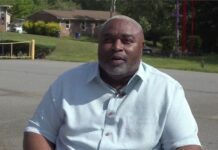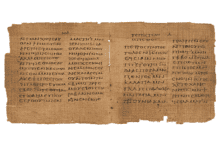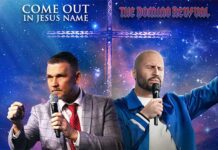“It’s not to say that I don’t think the federal government should be involved — I do,” said Thompson, a white scholar who directs Voices Underground, a team of researchers and community members focused on the history of the Underground Railroad in the Philadelphia area. “But I think community-based reparations allow African American leaders a lot more agency in this conversation than if it’s located at the federal government, which is not equitably representative of African Americans.”
Regional reparations initiatives have become more common of late. Since the 1990s, descendants of survivors of the 1923 massacre in the majority-Black enclave of Rosewood, Florida, have received state scholarships.
In March, the Evanston City Council, in Illinois, began approving reparations that provide mortgage and other housing assistance to local Black residents to make amends for racially discriminatory housing practices. In April, Virginia Gov. Ralph Northam signed a bill mandating that five of the state’s older public universities pay for scholarships or community redevelopment programs, starting in 2022, to benefit descendants of enslaved workers who built them.
Vernon AME is one of 23 churches in Greenwood that predate the massacre, of which 13 survived, according to a tally by Faith Still Standing, an ecumenical group of congregations that have rebuilt in the area or beyond it.
The Rev. Robert Givens pastors Christ Temple Christian Methodist Episcopal Church, a congregation that was founded in Greenwood but has since moved. Its original building was still new when it was destroyed in the massacre.
“When we think of Black Wall Street, it was tremendously a thriving area of all-Black businesses,” said Givens. “So a lot of the churches were just now getting started in that area” when they were burned down.
“Nothing was ever done for them or to help them in that situation,” said Christ Temple’s trustee board chairperson, Annette Gathron, of the people who lost homes, businesses and belongings along with their churches.
Some of those whose families survived the massacre have become key figures in the city’s Black history. The late John Hope Franklin, the famed historian, was a member of Christ Temple, and his father, attorney B.C. Franklin, helped pay off the church’s mortgage on the brick building it constructed after the massacre.
Gathron said she hopes to attend some of the worship services marking the centennial.
A “ Unity Day Worship Guide ” for congregations to use on the last Sunday in May is included in an online list of options for commemorative activities.
Gathron said she also intends to keep younger members of her family aware of the history of the city where she has lived for more than 60 years.
“I think that it’s good that we are remembering and I plan to take my great-grands to some of this so they can understand the struggles that we have had,” she said.
She traditionally takes nieces and nephews visiting from across the country on a walking tour through historic Greenwood, including a stop at Vernon AME.
“I think it’s important for them to know that they can achieve because this, at one time, was a very thriving community.”
On May 31, Tucker’s 130-member church, which opened in a rebuilt sanctuary in 1928, plans to dedicate “a prayer wall for racial healing” that will include an exterior wall of the basement that survived 100 years ago.
Once built, Turner hopes it will draw people of all faiths and none for prayer and meditation. “The idea behind it is to have people of all nations come and to pray and talk to God to help us with this racial healing that we need in the world,” he said.
This article orginally appeared here.











